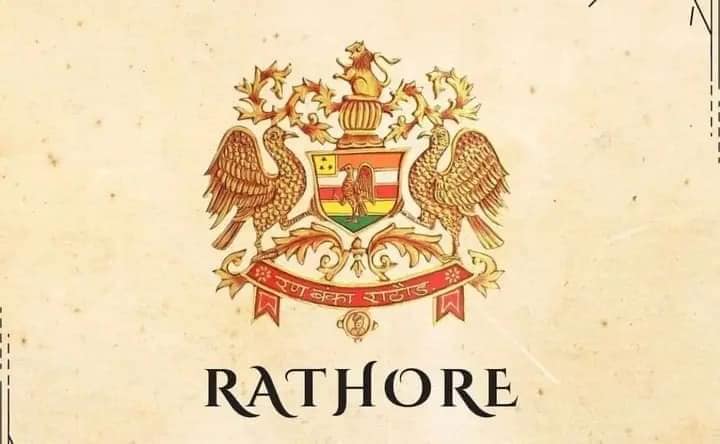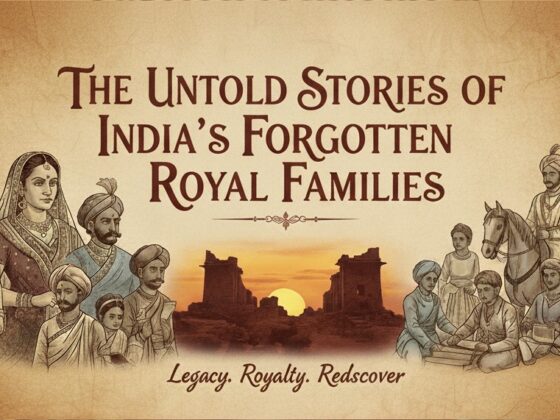Rathore Dynasty: The Legacy of Rajput Warriors and Kings

Introduction
The Rathore Dynasty is one of the most prominent Rajput clans in Indian history, known for their valor, chivalry, and governance. With a lineage tracing back to the 8th century, the Rathores established powerful kingdoms, including the princely states of Marwar (Jodhpur) and Bikaner. Their tales of bravery, resistance against invaders, and contributions to Indian heritage remain etched in history.
Origin of the Rathore Dynasty
The Rathores claim descent from the Rashtrakuta dynasty, an influential ruling family of medieval India. According to legend, their founder, Rao Siyaji, migrated to Rajasthan from Kannauj following the Ghaznavid invasion. Over time, the Rathores consolidated power, forming strongholds in the arid lands of Rajasthan.
The Rise of the Rathores in Marwar
One of the most significant Rathore kingdoms was Marwar, with its capital at Jodhpur. The Rathores established their rule in the 13th century, and under Rao Chunda and his successors, the dynasty flourished. Jodha, the founder of Jodhpur, shifted the capital from Mandore to Jodhpur, strengthening the kingdom’s defenses and administration.
Notable Rulers of the Rathore Dynasty
Several Rathore rulers left an indelible mark on Indian history through their leadership and vision. Some of the most prominent include:
1. Rao Chunda (1384–1428)
Rao Chunda was instrumental in expanding the Rathore influence in Rajasthan. He strengthened alliances and built strongholds that ensured the safety of his people.
2. Rao Jodha (1416–1489)
The founder of Jodhpur, Rao Jodha, is credited with establishing the magnificent Mehrangarh Fort. His efforts to fortify Marwar ensured its prominence in Rajput history.
3. Maharaja Jaswant Singh (1638–1678)
During the Mughal era, Maharaja Jaswant Singh played a crucial role in balancing relations with the Mughals while maintaining the sovereignty of Marwar. His diplomatic and military strategies ensured the stability of his kingdom.
4. Maharaja Ajit Singh (1707–1724)
Ajit Singh led the Rathores in resisting Mughal rule and played a significant role in reasserting Rajput independence in the early 18th century.
The Rathores in Bikaner
Apart from Marwar, the Rathores also ruled Bikaner, another significant princely state. Founded by Rao Bika in 1488, Bikaner flourished as a center of trade and culture. The rulers of Bikaner maintained a unique identity while contributing to the overall legacy of the Rathore clan.
Contributions of the Rathore Dynasty
The Rathore Dynasty not only excelled in warfare but also contributed immensely to Indian culture and governance. Their legacy includes:
1. Architectural Marvels
The Rathores built several iconic forts and palaces, including:
- Mehrangarh Fort – A grand fortress in Jodhpur, symbolizing the strength of the Rathores.
- Junagarh Fort – A well-preserved fort in Bikaner showcasing intricate architecture.
- Umaid Bhawan Palace – A blend of Rajput and European architectural styles, now a luxury hotel and museum.
2. Patronage of Arts and Culture
Rathore rulers were great patrons of art, music, and literature. They supported local artisans, poets, and musicians, enriching Rajasthan’s cultural heritage.
3. Military Prowess
Known for their fierce warrior spirit, the Rathores played a vital role in Rajput resistance against external invaders, including the Delhi Sultanate and the Mughals.
The Rathores in Modern India
With the integration of princely states into independent India in 1947, the political power of the Rathores diminished. However, their cultural and historical impact remains strong. The present-day descendants of the dynasty continue to uphold traditions, contributing to tourism, heritage conservation, and public service.
Conclusion
The Rathore Dynasty stands as a testament to bravery, resilience, and governance. Their legacy lives on through their architectural marvels, cultural contributions, and historical narratives. From the battlefields of Rajasthan to the corridors of magnificent forts, the Rathores remain an integral part of India’s royal heritage.








